
Roots
There are whispers carried on the wind, echoes from ancient lands, telling of a profound connection between the human spirit and the very strands that adorn our crowns. For communities of African descent, this connection runs deeper than mere aesthetics; it threads through generations, a living archive of identity, spirituality, and societal wisdom. Before the chilling shadow of colonial powers fell upon vast continents, textured hair was a vibrant testament to a people’s story, a language spoken in intricate braids and meticulously sculpted coils.
It was a crown, indeed, a living, growing extension of self, imbued with sacred meaning. How, then, could such an intrinsic part of being, so deeply woven into the fabric of daily life and ancestral practice, be so systematically attacked?
The tale of colonial suppression of Black hair heritage is not one of simple prejudice. Instead, it unfolds as a deliberate, insidious campaign, a calculated attempt to dismantle a people from the scalp downward. This onslaught aimed to sever the spiritual bonds, disrupt communal rituals, and erase the visual markers that proclaimed one’s lineage, marital status, age, or societal standing. To truly understand this profound loss and the subsequent resilience, one must first look to the bedrock, the very essence of textured hair itself, understanding its anatomy not just through a modern lens, but through the eyes of those who revered it as a biological marvel and a cultural compass.
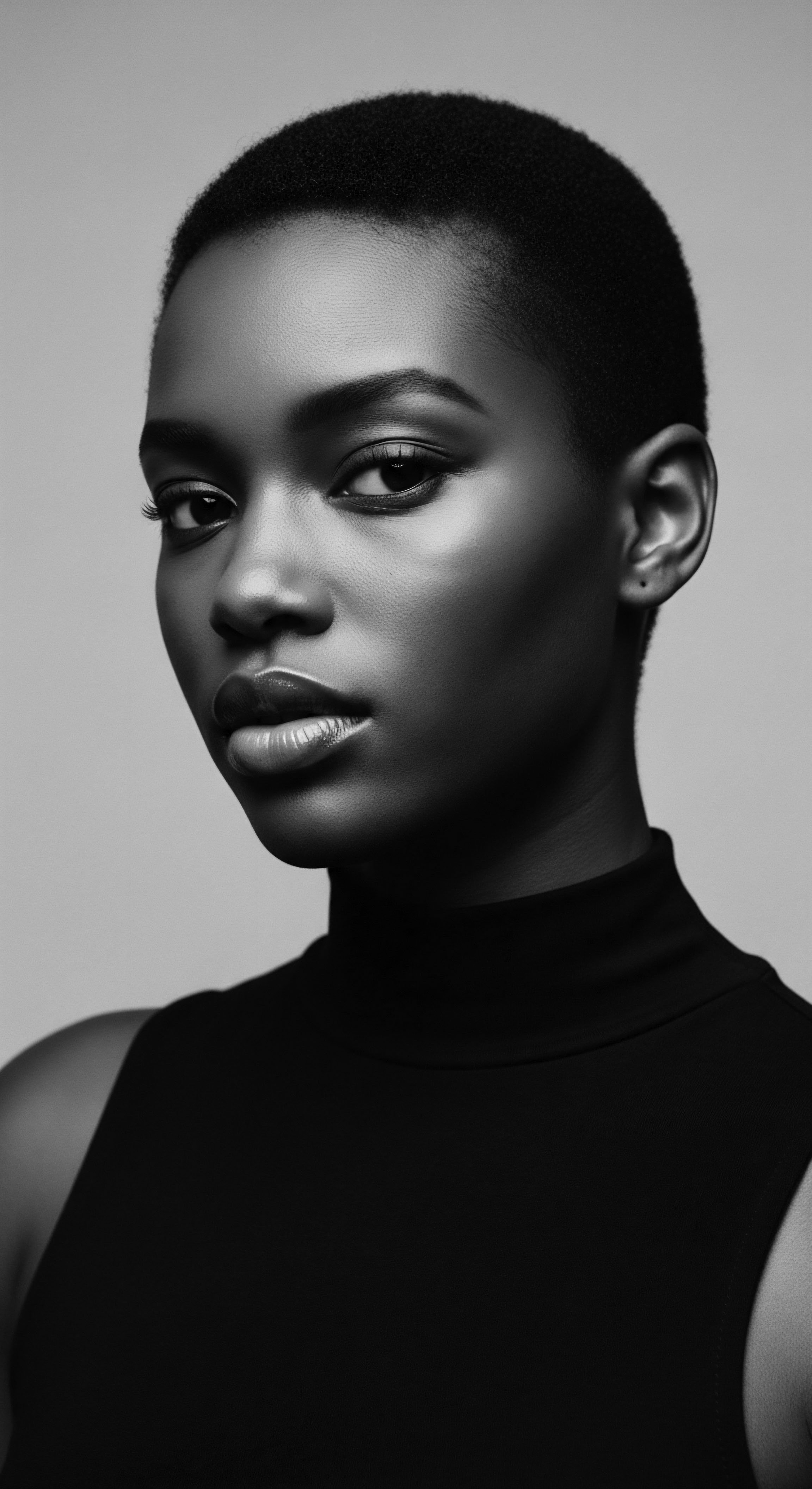
Hair Anatomy and the Ancestral View
Within every curl, every coil, lies a universe of biological distinction. Textured hair, often characterized by its elliptical or flattened cross-section and distinct curl patterns, presents a unique architecture. This shape dictates its propensity for coiling, its inherent volume, and its sometimes delicate nature. In pre-colonial African societies, this biological blueprint was not merely observed; it was understood through generations of practiced care.
Ancestral wisdom, passed down through oral traditions and communal grooming sessions, recognized the distinct needs of each strand. They knew the rhythms of its growth, the importance of specific botanical extracts for its health, and the protective embrace of certain styles.
Consider the very act of hair growth. Our hair cycles, from the active anagen phase to the resting telogen phase, are universal. Yet, for textured hair, the delicate curvature of the follicle means each twist and turn along the shaft requires meticulous care to prevent breakage. Ancient practitioners, without microscopes or chemical analyses, intuit this.
They understood that healthy hair spoke volumes about one’s well-being, both physical and spiritual. The Yoruba people, for example, viewed the head as the most elevated part of the body, a spiritual gateway, and therefore, hair care held profound significance, with braided styles used to send messages to the gods.
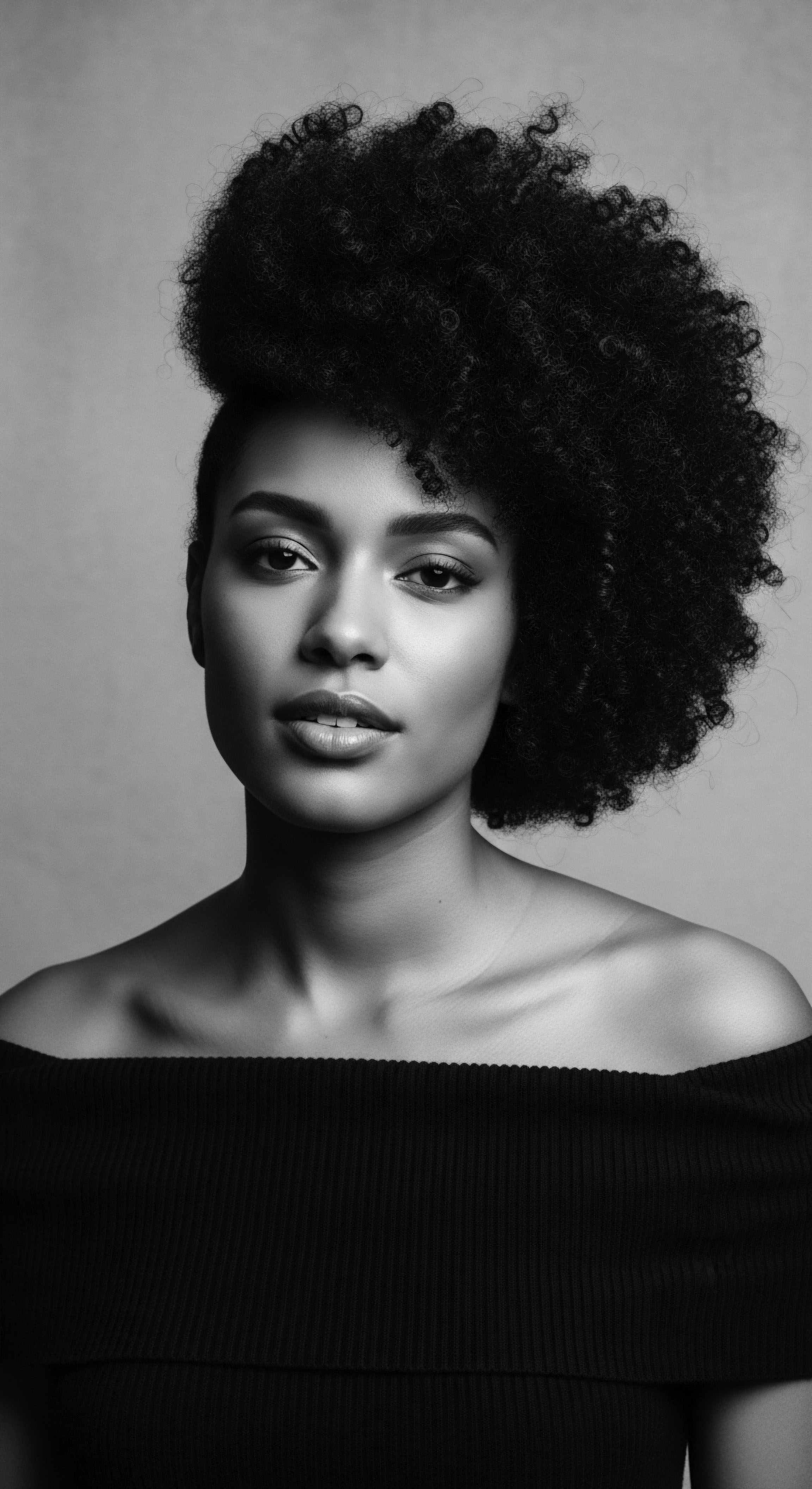
Classification and Cultural Expressions
Modern hair classification systems often attempt to categorize textured hair into numerical and alphabetical types (e.g. 3A, 4C). While these can offer a basic scientific description, they often fall short of capturing the rich diversity and cultural nuances that traditional societies celebrated.
For centuries before any Eurocentric classification, African communities had their own intricate systems, not based on numbers, but on lineage, ritual, and symbolic meaning. A specific braid might indicate one’s ethnic group, a particular adornment a sign of wealth, or a unique style a declaration of marital status.
Pre-colonial African societies considered hair a living language, communicating complex social, spiritual, and individual identities through its style.
These traditional distinctions were not merely arbitrary; they were deeply rooted in a collective understanding of identity. Hairdressers, often revered figures within their communities, held specialized knowledge, crafting styles that reflected communal roles and upheld local standards of beauty. They were artists, historians, and spiritual guides, all rolled into one, shaping not just hair, but identity and belonging.
- Yoruba ❉ Intricate styles conveyed social status, marital status, and spiritual connection. Hair was considered sacred.
- Himba ❉ Detailed, clay-coated braids signified connection to the earth and ancestors, with meanings largely unchanged today.
- Maasai ❉ Distinctive shaved and semi-shaved styles, alongside specific braids, marked initiation into warrior classes.
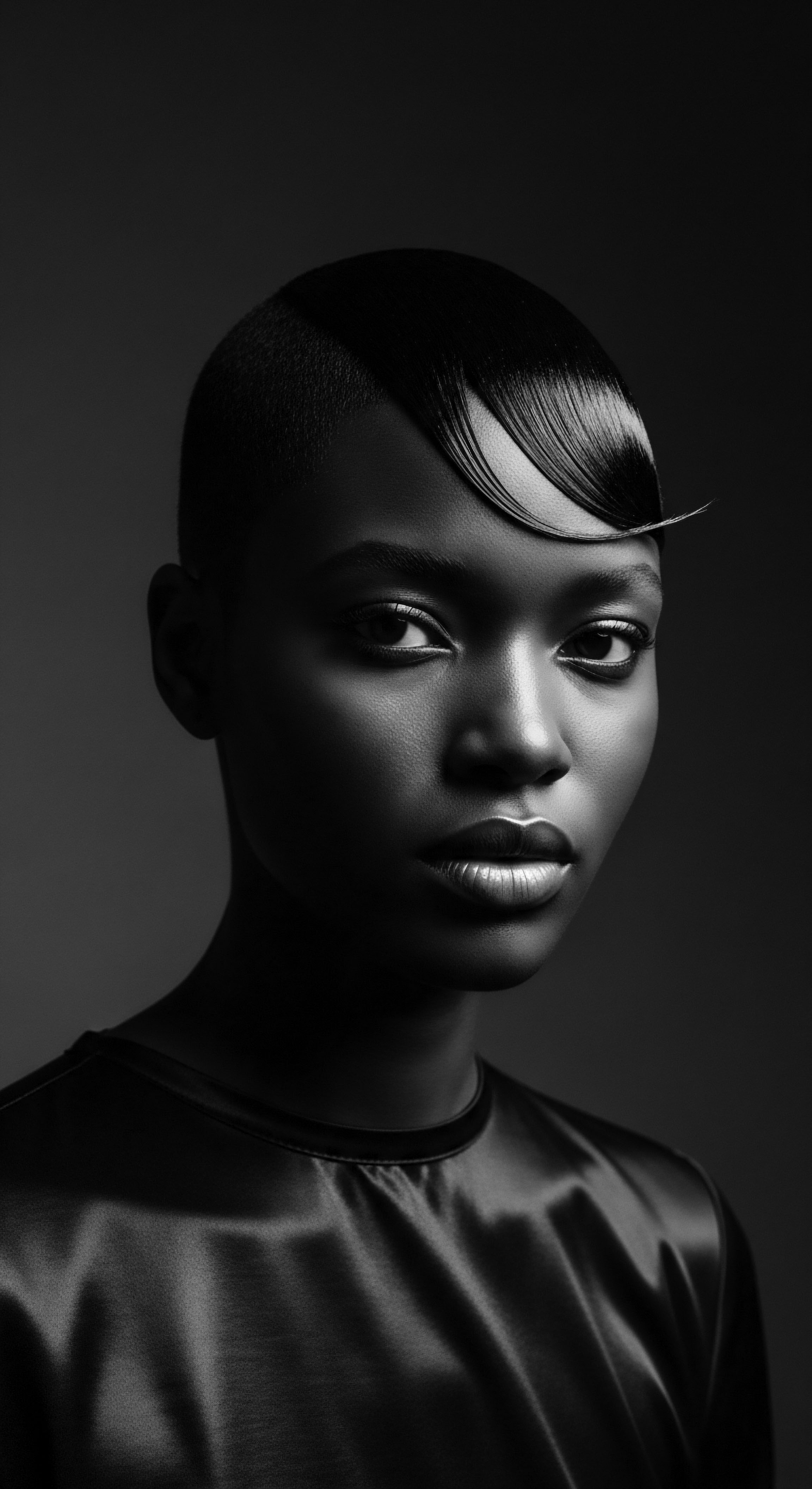
The Lexicon of Textured Hair ❉ Ancient Terms and Hidden Meanings
The language surrounding textured hair in pre-colonial Africa was rich, precise, and respectful, reflecting the deep cultural value placed upon it. Terms were not about “manageability” or “control” but about spirit, strength, and community. Though much of this original lexicon was deliberately suppressed or lost through the brutal disruptions of colonialism and slavery, echoes persist in the diaspora.
The collective journey of a people can be charted through how they speak of their hair. The very concept of hair as a “crown” (a sentiment echoed in Yoruba proverbs, for example) speaks to its regal position in ancestral thought.
The forced imposition of new descriptive terms during the colonial era, often derogatory ones like “nappy” or “wooly,” aimed to redefine and devalue textured hair, stripping it of its inherent dignity and placing it within a framework of European inferiority. This linguistic violence was a primary tool of suppression, directly assaulting the heritage of self-perception.
| Aspect of Hair Hair as Identity |
| Pre-Colonial African Significance Symbol of tribal affiliation, age, social status, marital status, spiritual connection. |
| Colonial Imposition or Perception Attempt to strip identity through shaving, imposing anonymity. |
| Aspect of Hair Hair as Community |
| Pre-Colonial African Significance Communal grooming rituals strengthened social bonds and passed down knowledge. |
| Colonial Imposition or Perception Forced separation, lack of time and tools for traditional care. |
| Aspect of Hair Hair as Beauty |
| Pre-Colonial African Significance Diverse textures and intricate styles celebrated as inherent beauty. |
| Colonial Imposition or Perception Promoting Eurocentric straight hair as ideal, pathologizing textured hair as "dirty" or "unprofessional." |
| Aspect of Hair This table highlights the stark contrast between ancestral reverence for textured hair and the deliberate devaluing acts of colonial powers. |
The understanding of colonial oppression cannot be complete without acknowledging this foundational attack on hair as a living, cultural, and spiritual entity, deeply rooted in the heritage of a people.

Ritual
The passage from an honoring of hair to its attempted suppression during the colonial era was swift and brutal, dismantling not just physical styles but the very rituals that sustained a people’s spirit. Colonial powers, driven by a desire for control and the imposition of a supposedly superior Eurocentric order, understood that severing the connection to indigenous practices was crucial for subjugation. Hair, being so intimately tied to personal and communal identity, became a direct target. The tactics employed were varied, ranging from overt violence to insidious psychological warfare, all aimed at eroding the deep-seated heritage of textured hair.
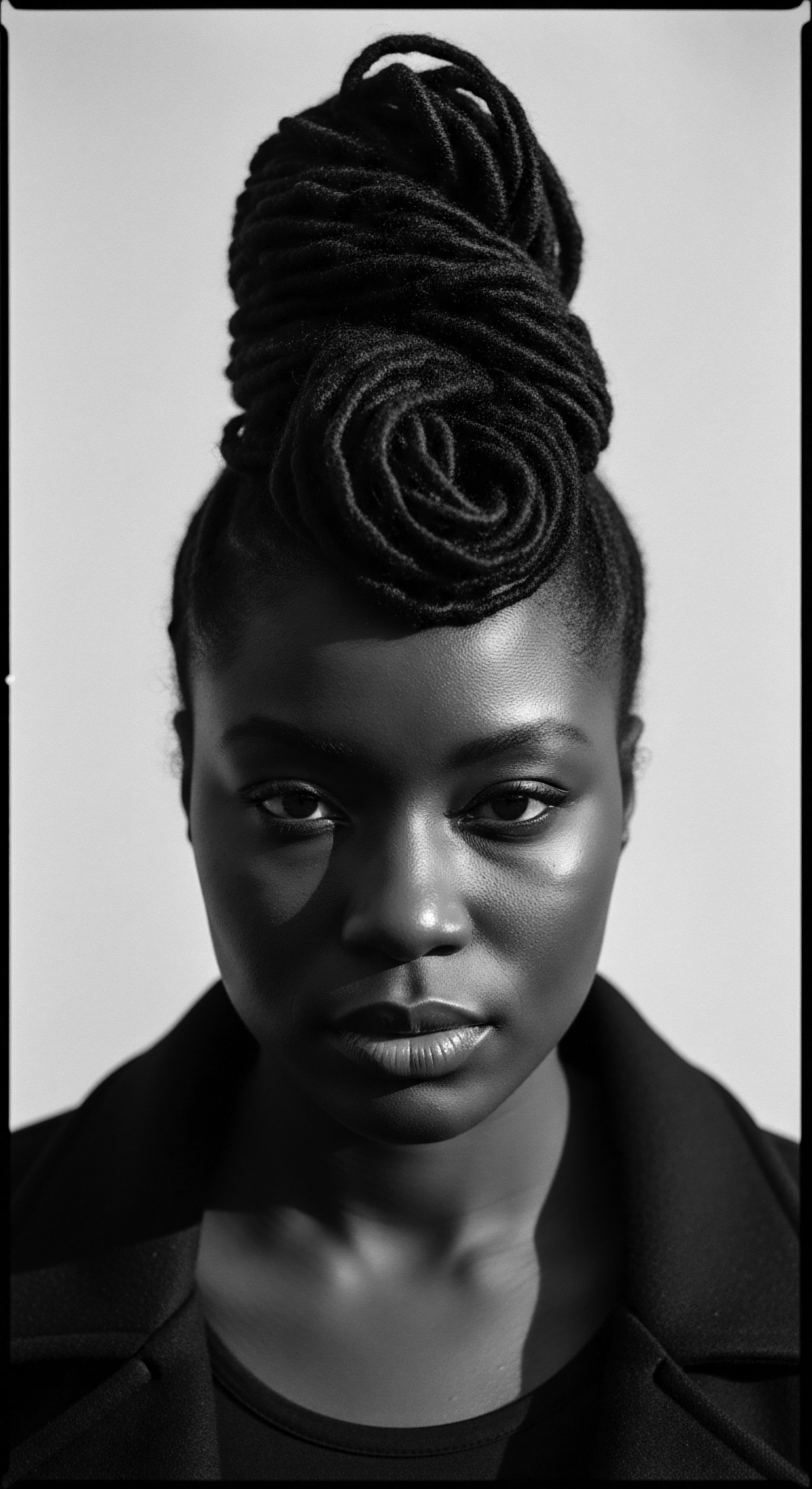
Forced Shaving and Dehumanization
Upon arrival in the Americas, one of the first and most traumatic acts inflicted upon enslaved Africans was the forced shaving or shearing of their heads. This was presented by slave traders as a sanitary measure, purportedly to control bacteria on ships. Yet, the true purpose was far more sinister ❉ it served as a brutal act of dehumanization, a deliberate stripping away of identity and cultural ties.
For cultures where hair signified status, lineage, and spiritual connection, this act was profoundly violating. It aimed to erase the very visual markers that distinguished individuals and connected them to their homelands, tribes, and families. The psychological impact was immense, forcing individuals into an anonymous state, reinforcing their new, degraded status within the colonial system. It was a tangible severing of ties, a stark declaration that the person they were before their capture no longer existed in the eyes of their captors.
The act of forced hair shaving by colonial powers represented a calculated psychological assault, aiming to erase identity and cultural belonging.

Legislative Control and the Tignon Laws
As enslaved and free Black communities began to rebuild their lives and cultural expressions in colonial territories, particularly in the Americas, their hair again became a site of contention. In cities like New Orleans, where free Creole women of color adorned their hair with elaborate styles, often incorporating feathers, beads, and jewels, their appearance challenged the established social hierarchy. This perceived threat to racial and social order led to the implementation of laws specifically designed to suppress Black hair expression.
A notable example is the Tignon Laws passed in Louisiana in 1786 by Spanish Governor Esteban Rodriguez Miró. These laws mandated that all women of African descent, whether enslaved or free, cover their hair with a simple knotted head wrap or tignon when in public. The stated aim was to distinguish these women from white women and prevent them from drawing attention, thereby reinforcing racial and social stratification. While the laws sought to degrade and devalue what was a source of pride, Black women often defied their intent by styling their tignons with vibrant fabrics and intricate wraps, transforming symbols of oppression into declarations of enduring beauty and resistance.
This legal suppression extended beyond overt laws. Missionary schools, for instance, sometimes enforced rules requiring African children to shave their heads, imposing punishment for non-compliance. This institutional control aimed to instill Eurocentric norms and detach children from their inherited hair practices.
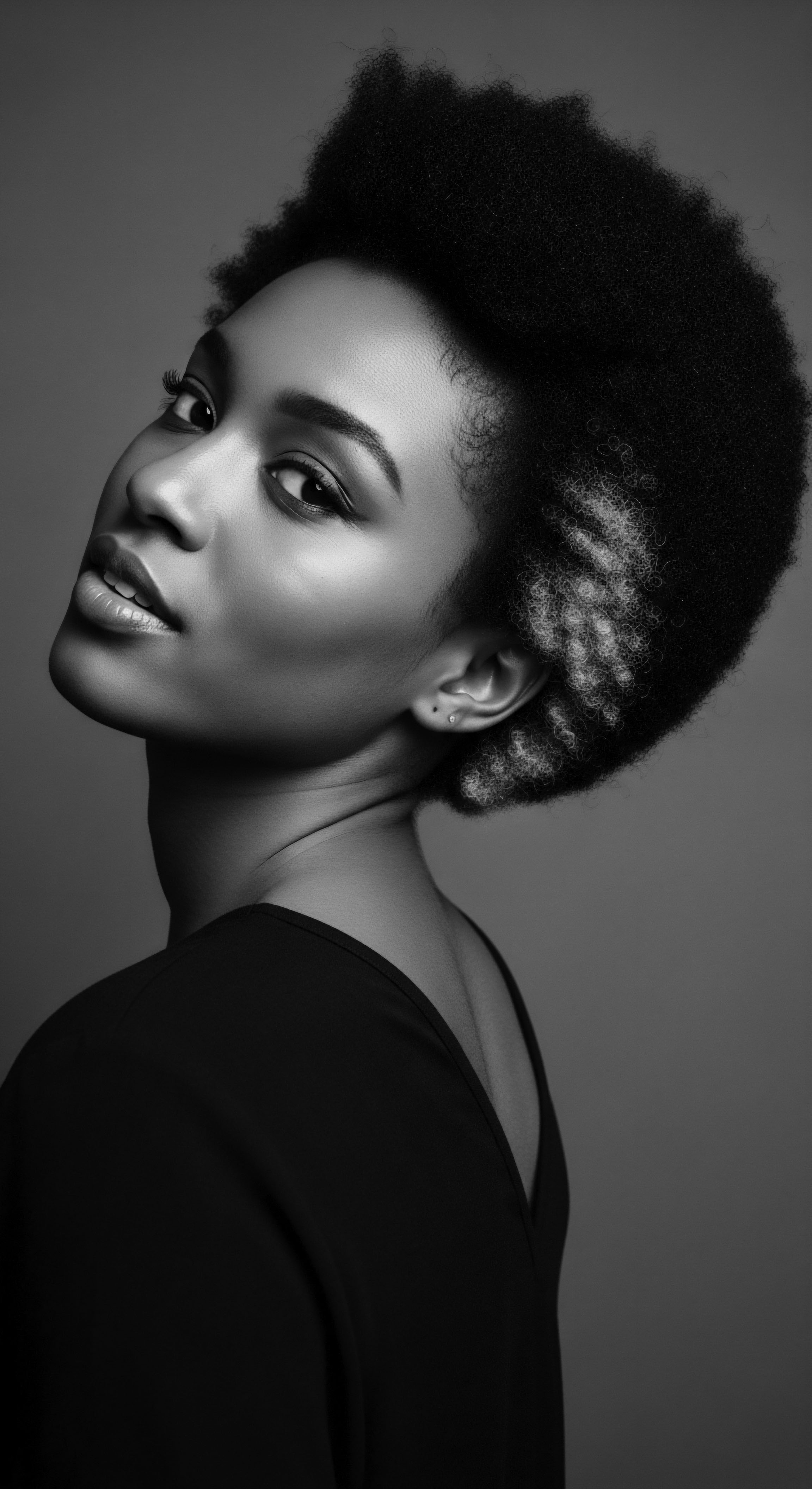
The Weaponization of Aesthetics ❉ “Good Hair” and “Bad Hair”
Beyond physical acts and legal decrees, colonial powers introduced and propagated a powerful aesthetic hierarchy. Eurocentric beauty standards, centered on straight hair, were imposed as the ideal, while textured hair was systematically pathologized. Terms like “nappy,” “wooly,” and “kinky” became derogatory, used to describe textured hair as unattractive, unmanageable, and unprofessional. This created an insidious internalized racism within Black communities, where straight hair became associated with “good hair” and social or economic advancement.
This psychological conditioning was reinforced through preferential treatment. Enslaved Africans with hair deemed closer to European textures sometimes received comparatively less physically demanding labor or better living conditions, creating a hierarchy even within the brutal system of slavery. Such practices instilled a belief that altering one’s hair to conform to white standards was a pathway to opportunity or even survival. This deeply impacted hair care practices, leading to the use of harsh straightening methods, some involving lye or heated tools, which often caused significant damage to the scalp and hair.
The subtle yet pervasive message was clear ❉ to assimilate, to be accepted, one must shed the markers of one’s African heritage, starting with the hair. This persistent devaluation continues to impact contemporary perceptions of textured hair, influencing self-perception and choices in the beauty industry.
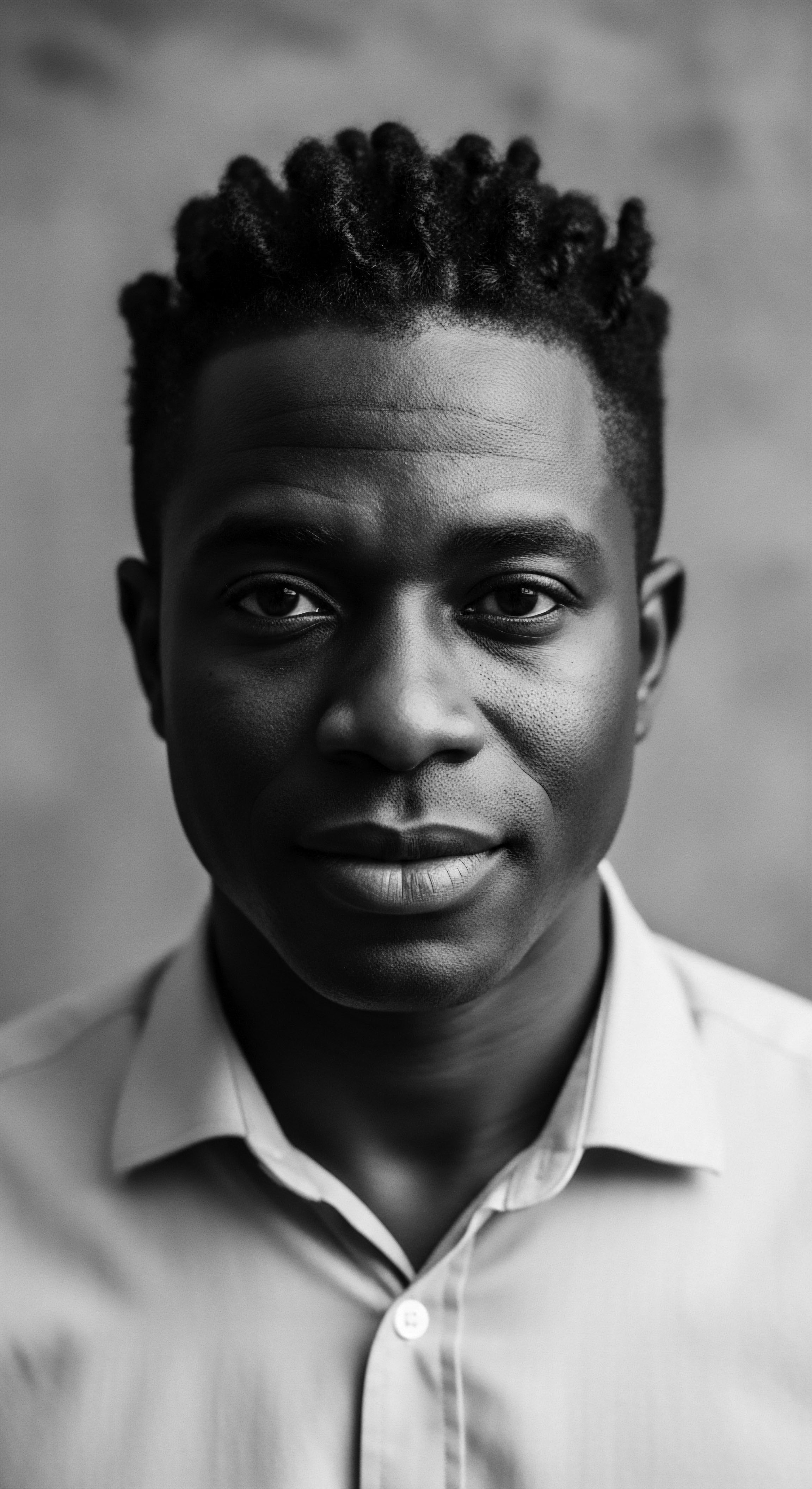
Relay
The colonial suppression of Black hair heritage, though rooted in historical acts, set in motion a chain of reverberations that continue to echo through contemporary society. The deliberate dismantling of ancestral hair practices, the imposition of Eurocentric beauty ideals, and the systemic devaluing of textured hair created a complex legacy. Yet, within this ongoing struggle, the human spirit’s profound capacity for resilience and reclamation shines through, transforming inherited burdens into vibrant expressions of cultural continuity and renewed pride.

How Did Historical Trauma Reshape Hair Care Traditions?
The sheer absence of tools, time, and culturally resonant knowledge during enslavement fundamentally altered hair care traditions. In pre-colonial Africa, hair grooming was a communal, time-intensive ritual involving specialized combs, natural oils, and shared narratives. The Middle Passage and subsequent plantation life stripped enslaved individuals of these resources. Hair, without traditional care, could become matted, tangled, and damaged, often leading to it being covered.
This drastic change necessitated adaptation. Enslaved individuals, despite brutal conditions, found ingenious ways to maintain a semblance of hair care, using whatever was available – animal fats, rudimentary combs carved from found materials, or pieces of cloth for head wraps. These acts, however seemingly small, were profound expressions of self-preservation and a refusal to completely relinquish their heritage. The resourcefulness demonstrated during these impossible circumstances became a testament to the enduring human desire for dignity and connection to one’s past.

The Enduring Power of Hair as Communication
Despite attempts at erasure, hair maintained its communicative power, transforming into a subtle yet potent language of resistance. In many instances, cornrows became intricate maps, charting escape routes to freedom, with specific patterns indicating paths, rivers, or safe houses. Seeds and rice grains were reportedly braided into hair, smuggled from Africa or for sustenance during arduous journeys, later to be planted, symbolizing hope and new beginnings. These hidden messages within hair were acts of profound defiance, utilizing an inherent part of oneself as a covert tool against oppression.
The adoption of head wraps, too, became a complex symbol. While some colonial laws mandated their use to signify social inferiority (as seen with the Tignon Laws), Black women repurposed them. They used vibrant, luxurious fabrics and styled them in visually striking ways, reclaiming the head wrap as an emblem of dignity, beauty, and quiet rebellion. This practice served as a continuous visual assertion of cultural identity, even under the watchful eyes of colonial authorities.
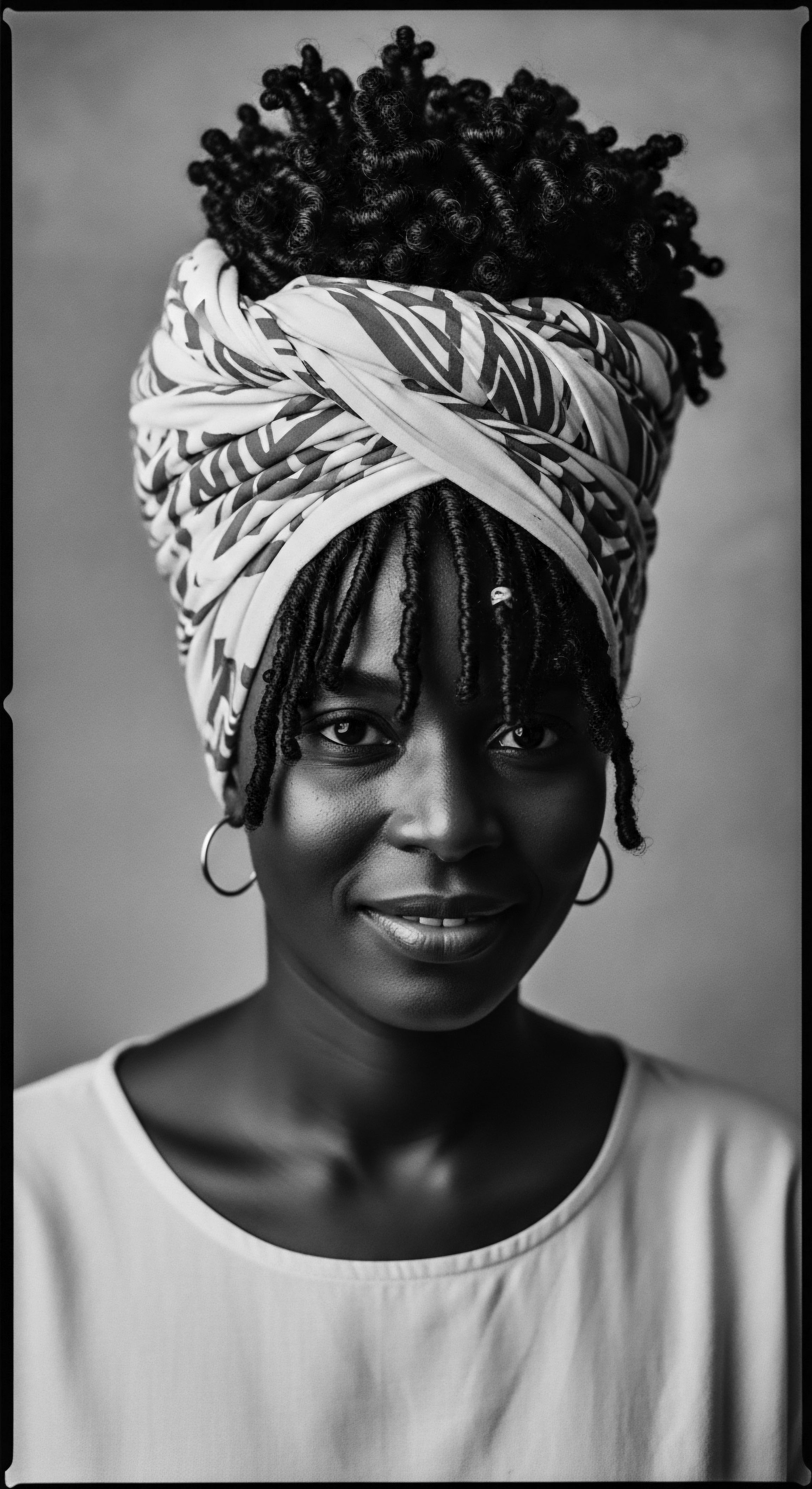
Modern Resurgence ❉ Reclaiming the Textured Helix
The echoes of colonial suppression continued long after formal emancipation, manifesting in ongoing discrimination and the pervasive societal pressure to conform to straight-hair ideals. For generations, chemically straightened hair became common, often seen as a prerequisite for social acceptance and economic opportunity within a Eurocentric society.
However, a powerful reclamation has unfolded through various movements. The Black is Beautiful movement of the 1960s and 70s, coinciding with the Civil Rights and Black Power movements, marked a significant turning point. This era saw the rise of the Afro, a voluminous natural style that became a potent symbol of Black pride, self-acceptance, and a direct challenge to oppressive beauty standards.
Prominent figures like Angela Davis sported the Afro, turning a hairstyle into a political statement of racial equality. This period laid the groundwork for a broader acceptance of diverse textured styles.
The early 2000s witnessed a second wave of the natural hair movement, fueled by increased access to information, social media, and a renewed desire to connect with ancestral heritage. This contemporary movement encourages individuals of African descent to wear their hair in its natural state, fostering self-love and rejecting imposed ideals. It emphasizes holistic care, celebrating the unique qualities of textured hair and drawing inspiration from traditional practices while embracing scientific understanding.
Today, this reclamation is evident in legal efforts, such as the CROWN Act in the United States, which aims to protect against hair discrimination based on natural or textured hair. As of June 2023, twenty-three states had passed similar legislation, demonstrating a societal shift towards recognizing and valuing the inherent beauty and cultural significance of textured hair. This legislative progress represents a tangible societal recognition of the historical struggle against hair suppression and a commitment to protecting Black hair heritage.
The journey from colonial oppression to contemporary celebration is a testament to the enduring spirit of a people whose hair has always been, and continues to be, a profound repository of history, identity, and unwavering heritage. Each strand, each curl, each coil carries the narrative of survival, adaptation, and an unyielding commitment to cultural preservation.

Reflection
The story of how colonial powers sought to suppress Black hair heritage is a somber chapter in human history, yet it is simultaneously a luminous testament to human tenacity. It reveals a deliberate effort to dismantle identity, to sever the physical and spiritual threads that bound a people to their ancestral roots. They sought to dim the radiance of textured hair, to silence its profound narrative, aiming to break the spirit within. Yet, the soul of a strand, much like the soul of a people, possesses an incredible, resilient capacity to endure, to remember, to grow, and to reclaim its inherent splendor.
This enduring journey, from forced shaves and oppressive laws to the vibrant natural hair movements of today, showcases the profound, living archive that is Black hair heritage. It is a heritage not confined to historical texts alone, but one that breathes in every twist, every braid, every freely coiling strand. It reminds us that beauty is not a monolithic ideal imposed from without, but a spectrum of inherent magnificence that pulses with ancestral wisdom. The tendrils of the past reach forward, gently guiding our understanding, reminding us that care for textured hair is more than superficial grooming.
It is a profound act of honoring, a re-establishment of ancestral connection, and a potent declaration of self-possession in a world still learning to appreciate the full spectrum of human beauty. The uncurling helix, now celebrated, stands as a vibrant beacon, a testament to what was lost, what was fought for, and what, against all odds, continues to flourish.

References
- Banks, Ingrid. Hair Matters ❉ Beauty, Power, and Black Women’s Consciousness. New York University Press, 2000.
- Byrd, Ayana D. and Lori L. Tharps. Hair Story ❉ Untangling the Roots of Black Hair in America. St. Martin’s Griffin, 2014.
- Mercer, Kobena. Welcome to the Jungle ❉ New Positions in Cultural Studies. Routledge, 1994.
- Patton, Tracey Owens. “Hey Girl, Am I More Than My Hair? African American Women and Their Struggles with Eurocentric Beauty Standards.” Women & Language, vol. 37, no. 1, 2014.
- Ross, Tracey. The Hair Tale ❉ Beauty, Race, and Identity in the Black Diaspora. Duke University Press, 2023.
- Sobo, Elisa J. Culture and the CROWN Act ❉ Hair, Identity, and the Law. Palgrave Macmillan, 2024.
- Walker, C.J. The Madame C.J. Walker Story ❉ From the Madam C.J. Walker Manufacturing Company Archives. Edited by A’Lelia Bundles. Scribner, 2001.
